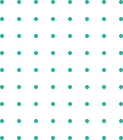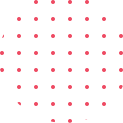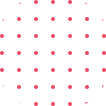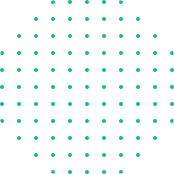AI based IoT Projects
AI when added to IOT it analyzes the data of those devices which are connected and make decision and act as per the data received & will be able to control the application without any human intervention.
CITL offers such latest technological industry trending projects which can be opted by both cse and ece students. Get hand-on towards such projects at CITL and gain industrial exposure even before getting into industries.
IEEE 2023 / 2022 ai based iot projects are designed using raspberry pi and deep neural networks.
IEEE 2023 / 2022 ml based iot projects are developed using arduino / raspberry pi and machine learning algorithms.
IoT-AI projects:
AIOT (Artificial Intelligence of Things) projects combine the power of AI (Artificial Intelligence) and IoT (Internet of Things) technologies
To create intelligent devices that can learn and adapt to user behavior and environmental changes. These projects aim to enhance the capabilities of IoT devices by adding advanced data analysis and decision-making capabilities using AI algorithms.
Some examples of AIOT projects or AI-iot projects include:
- Smart agriculture systems that use IoT sensors to collect data on soil moisture, temperature, and other environmental factors and use AI algorithms to optimize crop yield and reduce water consumption.
- Smart home systems that use IoT devices to monitor energy consumption and use AI algorithms to optimize energy usage and reduce costs.
- Intelligent transportation systems that use IoT sensors and AI algorithms to predict traffic patterns and optimize traffic flow.
- Smart healthcare systems that use IoT sensors to monitor patient health data and use AI algorithms to detect anomalies and provide real-time alerts to healthcare professionals.
Smart cities that use IoT sensors and AI algorithms to manage waste, reduce energy consumption, and improve the overall quality of life for residents.
To develop AIOT projects, developers need to have a strong understanding of both AI and IoT technologies, as well as programming languages such as Python, C++, and Java. They also need to have access to hardware components such as microcontrollers, sensors, and actuators, as well as software platforms such as Microsoft Azure IoT and AWS IoT. Overall, AIOT or ai and iot based projects offer great potential for innovation and have the potential to transform many industries.
Below is the list of IEEE-based research projects using IOT, AI,ML, and Deep learning concepts, contact us for more details
- Efficient Face Detection And Identification In Networked Video Surveillance Systems.
- Automated Vision-based Surveillance System to Detect Drowning Incidents in Swimming Pools
- Deep Learning Techniques for Obstacle Detection and Avoidance in Driverless Cars.
- Object Tracking with Raspberry Pi using Histogram of Oriented Gradients (HOG) and Support Vector Machine (SVM).
- Real Time Vehicle Detection, Tracking and Counting Using Raspberry-Pi.
- Indoor Intrusion Detection and Filtering System Using Raspberry Pi
- Smart Cloud-Based Parking System using raspberry pi and machine learning for Smart Cities
- A robotic system for environment monitoring system based on Iot and data analytics using machine learning algorithm.
- Raspberry pi based auto image description and converting to speech and text for visually impaired.
- IoT based smart energy meter reading and billing system using raspberry pi and power management using AI.
- A CNN based approach for fruit recognition & calorie estimation based on raspberry pi.
- Raspberry pi based leaf disease detection using KNN and deep neural network.
- Raspberry pi based Drowsiness Monitoring System using Visual Behavior's and Machine Learning.
- A portable assistive device for Blind, Dumb and Deaf people using AI.
- A smart farmland for crop prevention and animal intrusion detection using CNN.
Top 10 latest AI IoT based with Machine learning projects in 2023:,
-
AI-IOT Smart Traffic Management System: This project involves using AI algorithms to optimize traffic flow in cities by analyzing real-time data from IoT devices such as cameras and sensors.
-
AI-IOT based Smart Energy Management System: This project uses AI to improve energy consumption in buildings by analyzing data from smart meters and other IoT devices.
-
Smart Healthcare Monitoring: This project involves using AI algorithms to monitor patient health using wearable IoT devices and make real-time recommendations to healthcare providers.
-
AI-IOT-based Smart Home Automation: This project uses AI to automate and optimize various tasks in the home such as lighting, temperature control, and security.
-
Smart Waste Management System: This project involves using AI algorithms to optimize waste collection and disposal by analyzing data from IoT sensors in trash cans and recycling bins.
-
Smart Agriculture: This project uses AI to optimize crop growth and resource utilization by analyzing data from IoT sensors in the field.
-
Industrial Predictive Maintenance: This project involves using AI algorithms to predict and prevent equipment failures in industrial settings by analyzing data from IoT sensors.
-
Smart Water Management System: This project involves using AI algorithms to optimize water usage in cities by analyzing data from IoT sensors in water meters and pipes.
-
Autonomous Vehicles: This project involves using AI algorithms to enable self-driving cars and other autonomous vehicles by analyzing data from IoT sensors and cameras.
- Smart City Management: This project uses AI to optimize city infrastructure such as streetlights, traffic signals, and parking systems by analyzing real-time data from IoT devices.
Applications for face detection use algorithms that rely on identifying human faces in broader photos that may include environments, artifacts, and other sections of a person's physique. This work proposes a real-time identification system, based on modern image processing capabilities of open source API like OpenCV and due to the solution requirements, a study on the performance analysis of such solution compared to available commercial framework like SPID from NEC is intended. However, here, the study is available with the results of various experiments on the developed system. A systematic approach is followed to produce such outputs and have been measured using software codes. By using IP camera and a Raspberry Pi, the solution developed is simple in nature. This study relies on face detection and identification functionalities for human faces but not limited to live faces only but mix of faces from still images as well.
At present, swimming pools are built in hotels, sport clubs, schools and private residences. Although there have been various regulations put into place to reduce drowning accidents in some countries, communities still experience many drowning incidents. Accordingly, a real-time system that will track swimmers in a pool using machine learning techniques and prevents drowning accidents is proposed. The system consists of a Raspberry Pi with the Raspbian operating system, a Pixy camera, an Arduino Nano board, stepper motors, an alarm system, and motor drivers. The proposed system is based on the color-based algorithm to position and rescue swimmers who are drowning. The device then sends an alarm to the lifeguards. To verify the performance of the proposed system, a prototype has been developed, implemented, and tested. The results from experiments indicate that the system has a unique capability to monitor and track swimmers, thereby enabling it to mitigate and curb the number of deaths by drowning.
With the advent of Internet of Things (IoT), The realization of smart city seems to be very imminent. One of the key parts of a cyber physical system of urban life is transportation. This mission-critical application has attracted many researchers in both academia and industry to investigate driverless cars. In the domain of autonomous vehicles, intelligent video analytics is very critical. By the advent of deep learning many neural networks based learning approaches are under consideration. This work tries to implement obstacle detection and avoidance in a self-driven car. One of advanced neural network called Convolutional Neural Network (CNN) is exploited for real time video/image analysis using an IOT device. This project makes use of a raspberry pi which is responsible for controlling the car and performing inference using CNN, based on its current input. The model trained has achieved an accuracy of 88.6% and are in good consent with expected performance.
Population explosion leads to an unprecedented increase in the number of physical objects or vehicles on road. As a result, the number of road accidents increases due to a very heavy traffic flow. In this paper, traffic flow is monitored by using computer vision paradigm, where images or sequence of images provides a betterment on the road view. In order to detect vehicles, monitor and estimate traffic flow using low cost electronic devices, this research work utilizes camera module of raspberry pi along with Raspberry Pi 3. It also aims to develop a remote access using raspberry-pi to detect, track and count vehicles only when some variations occur in the monitored area. The proposed system captures video stream like vehicles in the monitored area to compute the information and transfer the compressed video stream for providing video based solution that is mainly implemented in Open CV by Python Programming. The proposed method is considered as an economical solution for industries in which cost-effective solutions are developed for traffic management.
Population explosion leads to an unprecedented increase in the number of physical objects or vehicles on road. As a result, the number of road accidents increases due to a very heavy traffic flow. In this paper, traffic flow is monitored by using computer vision paradigm, where images or sequence of images provides a betterment on the road view. In order to detect vehicles, monitor and estimate traffic flow using low cost electronic devices, this research work utilizes camera module of raspberry pi along with Raspberry Pi 3. It also aims to develop a remote access using raspberry-pi to detect, track and count vehicles only when some variations occur in the monitored area. The proposed system captures video stream like vehicles in the monitored area to compute the information and transfer the compressed video stream for providing video based solution that is mainly implemented in Open CV by Python Programming. The proposed method is considered as an economical solution for industries in which cost-effective solutions are developed for traffic management.
Recently, the current available surveillance technology still lacking in many aspect especially in terms of price and the flexibility of the alert system. In this modern living styles, illegal activities detection can be done through surveillance system. Due to the greater awareness in home security, home surveillance system offers great solution in providing efficient home security. Thus, this project is about proposing an intelligent home surveillance system with the use of Raspberry Pi. Whenever intrusion detected, the image of the intruder will be captured using a camera fasten to the Raspberry Pi device. Meanwhile, a buzzer represents an alarm that will be triggered once the intruder is captured in the frame of the camera. The captured video will be stored in SD Card which later can be used as evidence and prompt action can be taken to be reported to the responsible party.
Parking spaces are very important in metropolitan cities. Since the number of car buyers have substantially increased in these years. Therefore there is a urgent need to develop a system that will manage the car parking. In short there is a need I to develop a system which directly indicates which lane is vacant. So this paper’s objective is to develop a system to indicate the vacant lane in the parking slots. This involves a system that includes infrared transmitter and receiver in every lane and a led display outside the car parking gate. Parking slots are monitored by the staff of the concerned authority. All vehicles which enter into the parking that leads to waste of time slot. Sometimes it leads to blockage. Condition worsens when there are lanes consisting of multiple parking slots. Use of automated system for car parking monitoring will reduce the human efforts. So a display unit is installed on entrance of parking lot which will show status for all parking slots and for all parking lanes. Slot Status is indicated by the respective glowing LED.
Environmental monitoring systems are often designed to measure and log the current status of an environment or to establish trends in environmental parameters. We proposed an autonomous robotic system that is designed and implemented to monitor environmental parameters such as temperature, humidity, air quality, and harmful gas concentration. The system can update sensor data to IoT server every 15 seconds. The stored data can be used for further analysis of the reduction of pollution, save energy and provide an overall living environment enhancement. The system proposed in this paper is an advanced solution for monitoring the environment conditions at a particular place and make the information visible anywhere in the world. The technology behind this is Internet of Things (IoT), which is an advanced and efficient solution for connecting the things to the internet and to connect the entire world of things in a network. Here things might be whatever like electronic gadgets, sensors and automotive electronic equipment. The system deals with monitoring and controlling the environmental conditions like temperature, relative humidity, light intensity and CO2 level with sensors and sends the information to the web page and then plot the sensor data as graphical statistics. The data updated from the implemented system can be accessible in the internet from anywhere in the world.
Efficient and accurate object detection has been an important topic in the advancement of computer vision systems. With the advent of deep learning techniques, the accuracy for object detection has increased drastically. The project aims to incorporate state-of-the-art technique for object detection with the goal of achieving high accuracy with a real-time performance. A major challenge in many of the object detection systems is the dependency on other computer vision techniques for helping the deep learning based approach, which leads to slow and non-optimal performance. In this project, we use a completely deep learning based approach to solve the problem of object detection in an end-to-end fashion. The network is trained on the most challenging publicly available dataset (PASCAL VOC), on which a object detection challenge is conducted annually. The resulting system is fast and accurate, thus aiding those applications which require object detection. Due to object detection’s close relationship with video analysis and image understanding, it has attracted much research attention in recent years. Traditional object detection methods are built on handcrafted features and shallow trainable architectures. Their performance easily stagnates by constructing complex ensembles which combine multiple low-level image features with high-level context from object detectors and scene classifiers. With the rapid development in deep learning, more powerful tools, which are able to learn semantic, high-level, deeper features, are introduced to address the problems existing in traditional architectures. These models behave differently in network architecture, training strategy and optimization function, etc.
Efficient and accurate object detection has been an important topic in the advancement of computer vision systems. With the advent of deep learning techniques, the accuracy for object detection has increased drastically. The project aims to incorporate state-of-the-art technique for object detection with the goal of achieving high accuracy with a real-time performance. A major challenge in many of the object detection systems is the dependency on other computer vision techniques for helping the deep learning based approach, which leads to slow and non-optimal performance. In this project, we use a completely deep learning based approach to solve the problem of object detection in an end-to-end fashion. The network is trained on the most challenging publicly available dataset (PASCAL VOC), on which a object detection challenge is conducted annually. The resulting system is fast and accurate, thus aiding those applications which require object detection. Due to object detection’s close relationship with video analysis and image understanding, it has attracted much research attention in recent years. Traditional object detection methods are built on handcrafted features and shallow trainable architectures. Their performance easily stagnates by constructing complex ensembles which combine multiple low-level image features with high-level context from object detectors and scene classifiers. With the rapid development in deep learning, more powerful tools, which are able to learn semantic, high-level, deeper features, are introduced to address the problems existing in traditional architectures. These models behave differently in network architecture, training strategy and optimization function, etc.
Image-based fruit calorie estimation is crucial to diverse mobile applications for recording everyday meal. However, some of them need human help for calorie estimation, and even if it is automatic, fruit categories are often limited or images from multiple viewpoints are required. Then, it is not yet achieved to estimate fruit calorie with practical accuracy and estimating fruit calories from a fruit photo is an unsolved problem. Therefore, in this paper, we propose estimating fruit calorie from a fruit photo by simultaneous learning of fruit calories using deep learning. We present a system which can recognize the fruit image, and then predict its nutritional contents, such as calories. We present CNN-based approaches to these problems, with promising preliminary results.
This paper talked about a framework utilizing raspberry PI to detect and prevent plant disease from spreading. The k means clustering algorithm was used for image analysis. It has numerous focal points for use in vast harvest ranches and in this way distinguishes indications of sickness naturally at whatever point they show up on plant leaves. In pharmaceutical research, the recognition of leaf ailment is essential and a critical theme for research, because it has the advantages of monitoring crops in the field in the form and thus automatically detects symptoms of disease by image processing using an algorithm clustering k - means. The term disease refers to the type of plant damage. This paper gives the best strategy to recognizing plant infections utilizing picture preparing and alarming the ailment brought about by email, SMS and showing the malady name on the framework proprietor's screen display. Automatic detection of symptoms of disease is useful for upgrading agricultural products. Completely automatic design and implementation of these technologies will make a significant contribution to the chemical application. The cost of pesticides and other products will be reduced. This will lead to an increase in farm productivity.
Drowsy driving is one of the major causes of road accidents and death. Hence, detection of driver’s fatigue and its indication is an active research area. Most of the conventional methods are either vehicle based, or behavioural based or physiological based. Few methods are intrusive and distract the driver, some require expensive sensors and data handling. Therefore, in this study, a low cost, real time driver’s drowsiness detection system is developed with acceptable accuracy. In the developed system, a webcam records the video and driver’s face is detected in each frame employing image processing techniques. Facial landmarks on the detected face are pointed and subsequently the eye aspect ratio, mouth opening ratio and nose length ratio are computed and depending on their values, drowsiness is detected based on developed adaptive thresholding. Machine learning algorithms have been implemented as well in an offline manner. A sensitivity of 95.58% and specificity of 100% has been achieved in Support Vector Machine based classification.
We live in a digital era with advancement in information and communication technology. Sign language is an expressive way of communication between normal and dumb-deaf people in order to improve the life style of dumb, deaf and blind people the proposed system is developed. In general, deaf people have difficulty in communicating with others who don’t understand sign language. Even those who do speak aloud typically have a “deaf voice” of which they are self-conscious and that can make them reticent. The Hand Talk glove is a normal, cloth driving glove fitted with flex sensors along the length of each finger and the thumb. The sensors output a stream of data that varies with degree of bend. The output from the sensor is analog values it is converted to digital and processed by using microcontroller and then it will be transmitted through wireless communication (RF), then it will be received in the receiver section and processed using responds in the voice using speaker.
This project is used to protect the farmland from animals by using Raspberry pi. Wild animals are special challenge for the farmers throughout the world. Animals like wild boars, elephants, monkeys etc...cause serious damage to crops. This project utilizes the RFID (Radio Frequency Identification Device) module and GSM (Global System Mobile) modem for this purpose. Forest officer and farmers will get these SMS containing area in which that animals observe. The techniques that already being used is ineffective, in this article we are presenting a practical procedure to ward them off, by creating a system which studies the behavior of the animal, detects the animal and creates the different sound that irritates the animal and also alerts the authorized person by sending a message. After the detection the intimation is sent. This project is mainly contributed to repellent the animals to the forest by using three stages are intimation and irritation noise.












